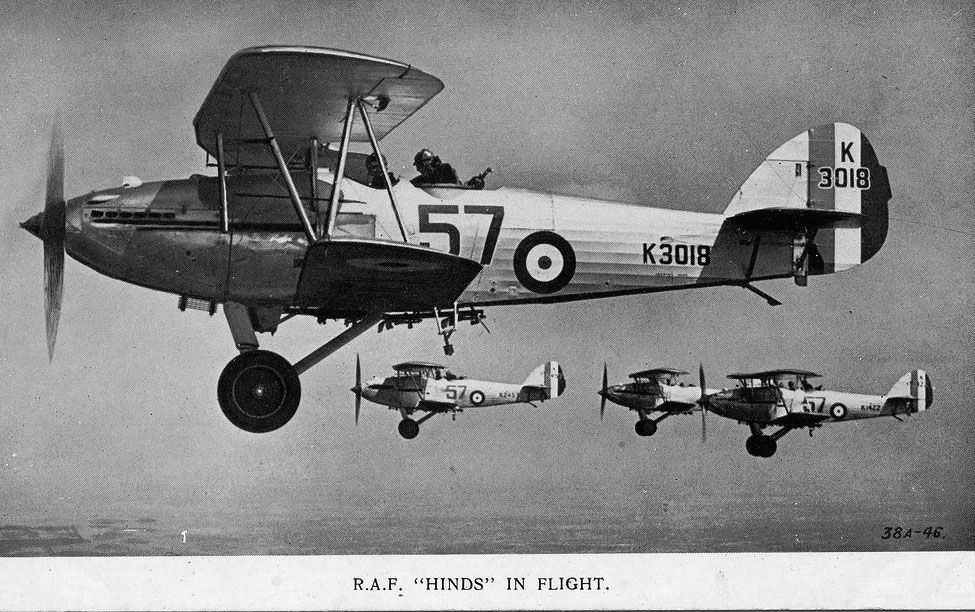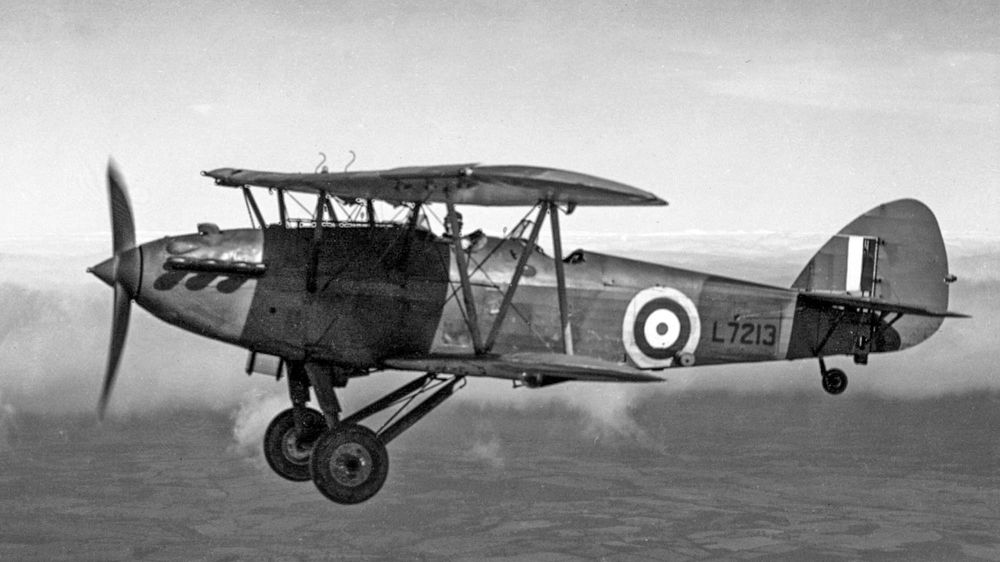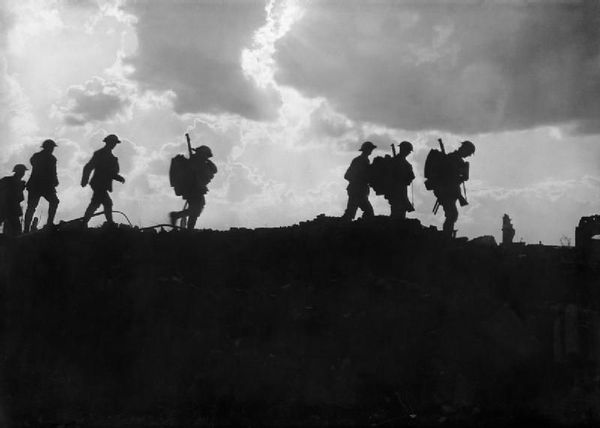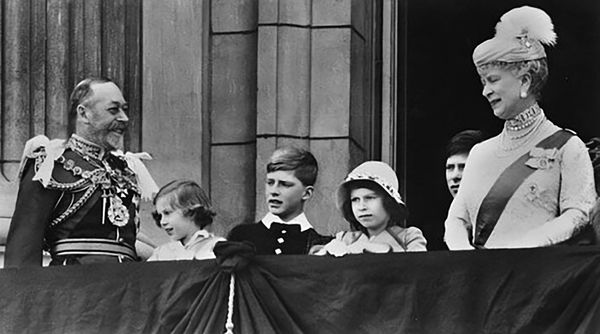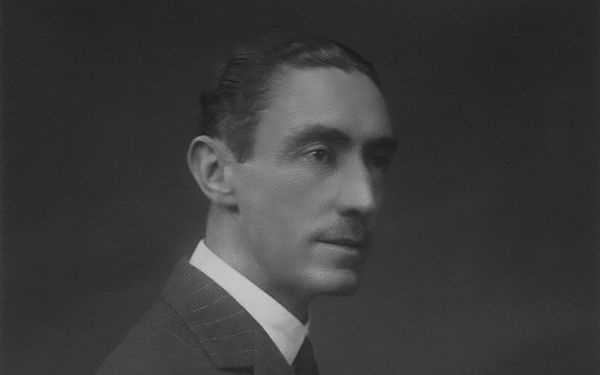Pilot-Sergeant Killed in Air Tragedy
On Wednesday 30th December 1936 a routine practice session turned to disaster, with tragic consequences, but no one was ever able to explain exactly why. An inquest held at the RAF base in Upper Heyford the following day heard how one of their pilots, Pilot-Sergeant S.J. Ower, had been practicing landing manoeuvres when, at about 10:45 am, he crashed his plane close to the Barley Mow crossroads near Juniper Hill (now a roundabout where the A421 and B4031 meet the A43), killing himself and injuring his passenger, Corporal Hobbs.
The site now occupied by RAF Croughton was then a landing strip used for practice flights by many of the RAF bases in the area. This is where Pilot-Sergeat Ower was operating when the plane, a Hawker Hind like the one shown above, came down in the field on the opposite side of the main road. One wing caught the ground and twisted the plane over, the engine and cockpits were badly smashed. Fortunately, although petrol flowed freely following the crash, there was no fire, and so little commotion that few of the people living in the immediate vicinity heard anything.
Mr William G. Pratt and Mr G.F. Rogers, both of Juniper, were the only two persons about when the accident happened. They immediately ran to the scene and helped as much as they could. Unfortunately, Pilot-Sergeant Ower was beyond human aid, having been killed immediately on impact. Corporal Hobbs was injured but able to escape the craft. A passing motorist had alerted the police in Brackley, and so Dr G.N. Stathers soon arrived on the scene with the police and was able to attend to Hobbs’ injuries. The Bicester ambulance also went out and conveyed Corporal Hobbs to the Heyford airbase, then on to Halton, where he later made a full recovery.
The inquest was reported in the Bicester Advertiser as follows:
The death of Sergeant Ower was the subject of an inquiry at the RAF Station, Heyford, last evening, conducted by Mr E.C. Fortescue, of Banbury (Coroner for North Oxon), who sat with a jury composed of the following: Messrs W. Grimmett, W. Hadland, J.W. Nelder, F. Brain, H. Pratt, A. Boss and J. Simms. Mr Grimmett it was chosen as foreman.
The first witness was Flying Officer Frederick Mark Smith, who said that Pilot-Sergeant Ower was 27 years of age. He was a competent pilot and had had considerable flying experience, having flown the particular machine – a Hawker Hind – on several previous occasions. On Wednesday he was ordered to carry out forced landing practice at the RAF landing ground at Cottisford, and was told to leave at 10:10 am and carry out 35 minutes’ flying practice. The plane had previously been flown that morning by Pilot-Officer Dilmot. Deceased took off at 10:35 am and at 11:10 am witness heard of the crash, and on arriving on the scene found that Corporal Hobbs, whom Ower had been ordered to take as passenger, had been taken away. Deceased had been removed from the machine and was laid some ten yards away.
In answer to the foreman of the jury, witness explained that the reason why Ower did not take off until 10:35, after being ordered to go at 10:10, was because Pilot-Officer Dilmot misunderstood witness’ order and instead of leaving the machine where he landed, with the engine running, he taxied it to the petrol pumps. The machine thus had to be taken back and the engine started again for Ower to take off.
L.A.C. James Mortimer Wiffle, of 18 Bomber Squadron, said he was responsible for the frame and engine of the machine. He carried out routine inspection at 9 am on Wednesday, and Pilot-Officer Dilmot took the plane off at 9:35. When he came down witness carried out further inspection and was satisfied that when Sergeant Ower took off the plane was perfectly serviceable.
Pilot-Officer Alan Arthur Dilmot said he took the Hawker Hind up at 9:35 on Wednesday morning and landed at 10:10 am. During the whole time he was flying, the machine appeared in good order and he experienced no trouble of any kind. The weather conditions were good. He carried out forced landing practice at Cottisford, which meant flying to a height of approximately 2,000 feet and descending with the throttle closed, so that one might practice coming down without the aid of the engine, to be prepared for emergencies. He did not land, but came within a few feet of the ground. In his opinion Ower might have stalled during the final turn. When a plane stalled it lost flying speed, the nose dropped and the aircraft would fall appreciably before the pilot could regain enough speed to resume control. When he saw the machine after the crash the throttle was a quarter over, but that might have happened during the process of moving the machine.
Hugh G. Eade, of Spinney Hill, Northampton, a Customs and Excise Officer, stated that he was driving from Oxford towards Brackley on Wednesday morning. As he was passing a field in Cottisford he saw a man standing in the ditch on the right-hand side of the road waving his hands, and witness then saw a plane in the field. The man, whom witness now knew as Corporal Hobbs, was cut and bleeding. He was holding his ribs in a doubled-up attitude and appeared in pain. He asked witness to ring up Heyford Aerodrome, and he drove on to Brackley and did so. Witness observed Ower hanging over the side of the machine and he appeared to be dead.
William George Pratt, of Juniper Hill, Cottisford, said that on Wednesday morning he was walking towards the main Oxford-Brackley road and saw a plane travelling towards the flying ground but did not see if it landed because the hedge obscured his view. It flew up again, did a right turn and passed overhead about 150 feet up, making straight for the landing ground again. In his opinion the engines were running perfectly. Suddenly he saw the machine give a sharp dip at the same time as it turned on its right side, and the offside wing caught the ground. “There was a terrible crash,” added witness, “and I immediately hurried towards the scene. I stopped an approaching car, the occupant of which was the last witness, and I directed him to Brackley to the nearest police station and hospital. When I arrived at the spot I saw a man walking about in air overalls, waving his arms, and he shouted, “For God’s sake get my mate out.” I then saw that Ower was dead.” With assistance, continued witness, the body was removed from the wreckage in case of fire.
Another witness, Mr G.F. Rogers, of Juniper, was present at the inquest, but as his evidence would have been similar to that of the previous witness it was felt unnecessary to call him.
Flying-Officer Cross, medical officer at the RAF Station, Upper Heyford, said he knew Ower personally and he was physically fit. He was informed of the accident and proceeded to Cottisford. About two miles out he met a private car which was conveying Corporal Hobbs to the Camp, and witness at once examined him and sent him on to Heyford in the ambulance. On arriving at the scene of the crash he was informed by Dr Stathers, of Brackley, that Ower was dead, and on examination found that deceased had a fractured skull, a large perforated wound in the front of the neck, and multiple injuries, which were sufficient to have caused instant death. When being examined later, Hobbs told witness he had been lucky, as a moment before the crash he had tied his belt on, but remembered nothing more after that. Hobbs had slight concussion but was not seriously injured. Witness enquired after Hobbs at Halton later and was informed that he remembered nothing about the crash, which was consistent with his having suffered concussion, and it was safe to say that Hobbs never would remember what happened. Ower’s death was a result of the fractured base of the skull and multiple injuries.
In answer to the foreman of the jury, Pilot-Officer Dilmot explained that Hobbs, by tying his belt, had no doubt saved himself from being thrown out of the machine, and that was what he meant when he said he had been lucky.
The jury, without retiring, returned a verdict of “Accidental Death” and added that no blame attached to anyone.
